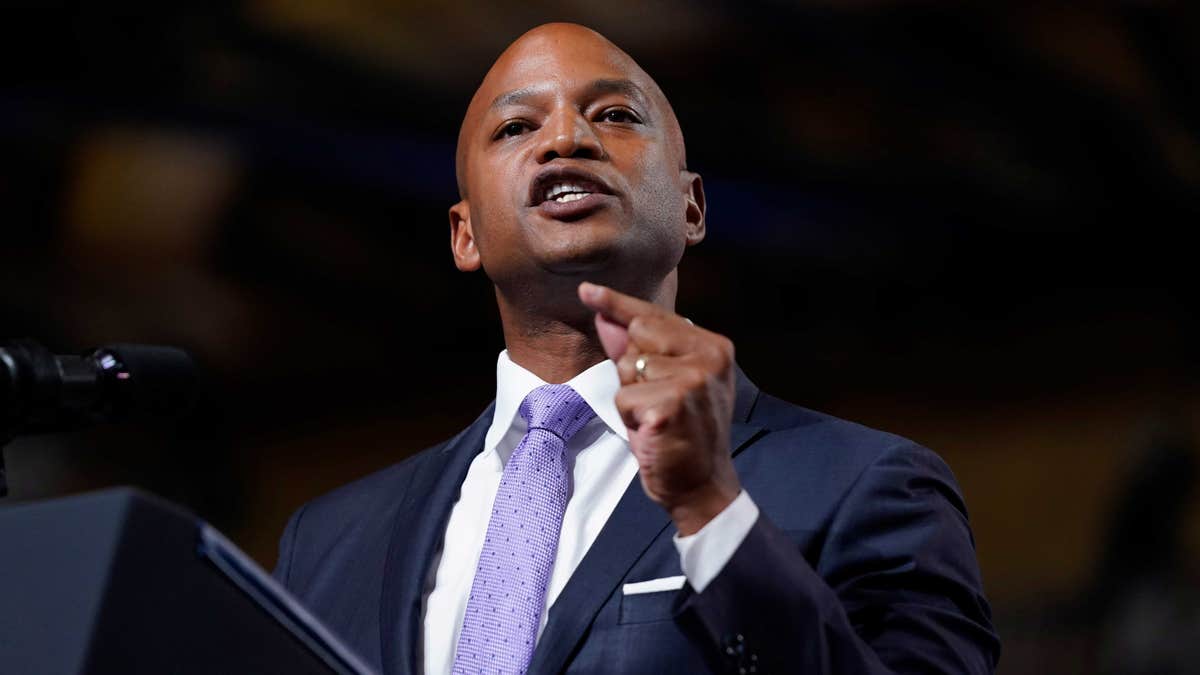Fox News Flash top headlines for November 3
Fox News Flash top headlines are here. Check out what's clicking on Foxnews.com.
This is a big election year in Maryland, long a blue state that became majority-minority over the past decade, with statewide races for governor, attorney general and comptroller, all 188 seats in the General Assembly, the state’s eight U.S. House seats and a U.S. Senate seat.
Democrats control the Legislature and will be trying to regain the governor’s office held by the departing Larry Hogan, who is only the second Republican in the state’s history to be reelected governor. State law bars anyone from seeking a third term.
Maryland’s top race features Democrat Wes Moore against Republican Dan Cox for the governorship. Moore, a bestselling author and combat veteran, has held double-digit leads in a state where Democrats outnumber Republicans 2-1. Cox is a first-term state legislator who denied the 2020 presidential election results.
Democrats hold a 7-1 advantage in Maryland’s U.S. House delegation, and most of the seats are viewed as safe for the incumbents. However, after a judge struck down the state’s congressional map this year due to partisan gerrymandering, the state’s western Maryland district is looking competitive. Democratic incumbent David Trone is in a rematch with Republican Del. Neil Parrott in a district that has been redrawn in a way that improves Parrott’s chances.
Sen. Chris Van Hollen, a Democrat, faces Republican Chris Chaffee in his run for a second term.
Maryland’s ballot also includes a constitutional amendment to legalize recreational marijuana.
BALTIMORE AUTHORITIES SAY HUNDREDS OF CARS STOLEN EACH MONTH
Here’s a look at what to expect on election night:
Election Night
Polls close at 8 p.m. ET.
How Maryland Votes
Voting by mail has become popular in Maryland since the pandemic. Maryland also offers in-person early voting. Same-day voter registration is available for eligible Maryland residents at all early voting centers.
Two of Maryland’s key jurisdictions are in the suburbs of the nation’s capital. Montgomery and Prince George’s counties are the state's most populous and heavily Democratic.
Decision Notes
AP will tabulate and declare winners in 94 contested elections in Maryland, including nine statewide races and eight U.S. House races. In the 2020 general election, AP first reported results at 8:55 p.m. ET and 90% of the results at 10:33 p.m. ET on Monday, Nov. 9.
The AP does not make projections and will only declare a winner when it’s determined there is no scenario that would allow the trailing candidates to close the gap.
Should a candidate declare victory or offer a concession before the AP calls a race, we will cover newsworthy developments in our reporting. In doing so, we will make clear that the AP has not declared a winner and explain why.
The AP may call a statewide or U.S. House race in which the margin between the top two candidates is 0.5% or less, if we determine the lead is too large for a recount to change the outcome.
The AP will not call down-ballot races on election night if the margin between the top two candidates is less than 2%. AP will revisit those races later in the week to confirm there aren’t enough outstanding votes left to count that could change the outcome.
What Else Should I Know?
Q: What Did We Learn From the Primary?
A: For the July primary, state law prevented mail-in ballots from being counted until two days after Election Day. But the state’s highest court has since ruled that counties can start counting mail-ins before Election Day in the general election to avoid delays.
Q: What’s Changed Since the Pandemic Election of 2020?
A: The law on when to count those mail-in ballots has bounced back and forth. Back then, a state of emergency due to the pandemic enabled elections officials to count more mail-ins earlier than normally allowed. When the state of emergency expired, however, the state went back to barring the counting of mail-in votes until two days after Election Day.

Republican gubernatorial candidate Wes Moore, pictured here giving a speech at a rally at Richard Montgomery High School, on Aug. 25, 2022. (AP Photo/Evan Vucci, File)
State lawmakers had passed a bill to change the law to allow the earlier counting to begin for the July primary, but the governor vetoed it because he did not approve of other provisions. With a large number of mail-in votes during the primary, results were delayed by days in some high-profile races.
That prompted the Maryland State Board of Elections to ask a judge to restore the ability to start counting sooner; that was granted and affirmed by the state’s highest court. Not all counties will be counting earlier as allowed, but the state’s largest jurisdictions are counting mail-in ballots before Election Day, which should speed things somewhat.
Q: What Do Turnout and Advance Vote Look Like?
A: As of Oct. 22, there were 4,124,156 registered voters in Maryland, including 2,235,977 Democrats and 992,188 Republicans. As of Oct. 27, 610,837 absentee ballots had been requested and 218,229 had been returned. Mail ballots postmarked on or before Nov. 8 must be received by Nov. 18 to be counted.
Q: How Long Does Counting Usually Take?
A: Days, with the recent primary taking nearly three weeks for some races. In the 2020 general election, it took six days for the AP to be able to report 90% of results. The state reached 100% on Nov. 15, 12 days after Election Day.
Q: What Are the Pitfalls With Early Returns?
A: Some of the largest counties like Montgomery, Prince George’s and Baltimore are heavily Democratic but among the slowest to count and report results. That can make Republicans in some races look like they're way ahead until those votes come in.
CLICK HERE TO GET THE FOX NEWS APP
Q: What Happens After Tuesday?
A: Maryland does not have a mandatory recount law, though a candidate may request one at his or her expense within three days after the results of the election having been certified by the local or state board of canvassers.

























